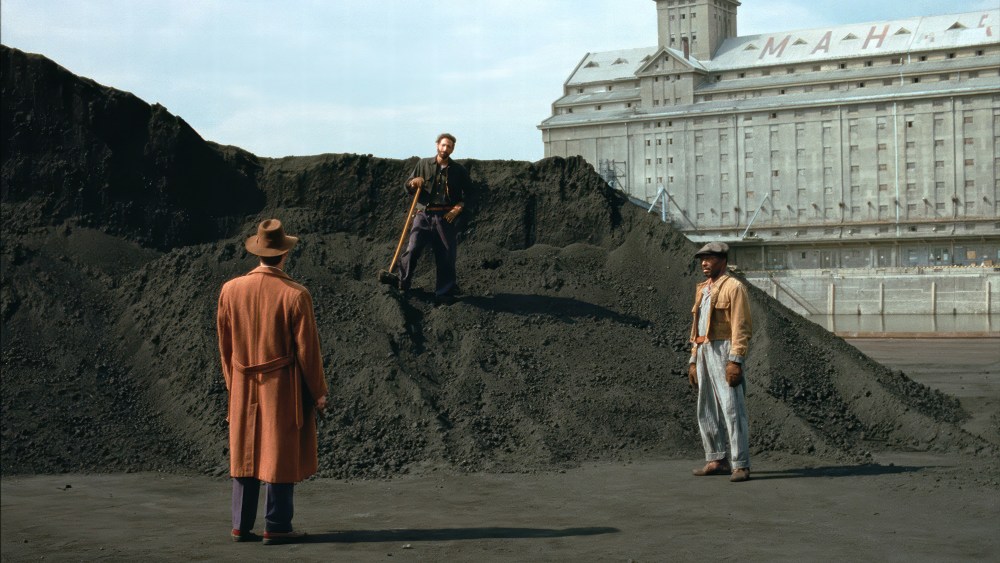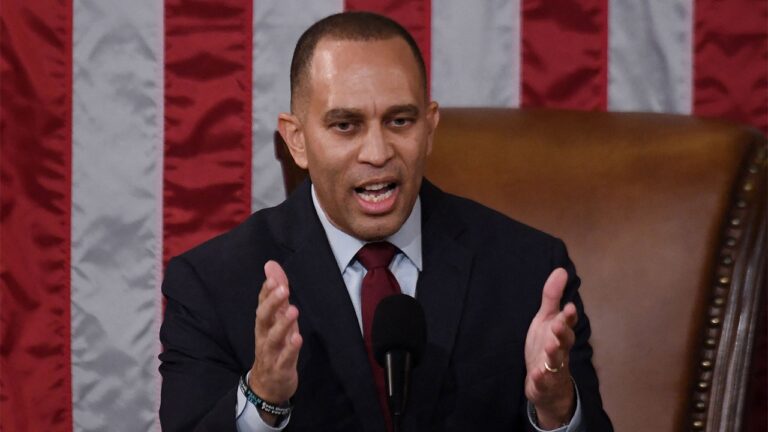Judy Becker’s portfolio of production design work on films like “American Hustle” and “Carol” prepared her to take on the unique challenge of shooting a period piece.
“Carol” was shot in Cincinnati doubling for New York and “American Hustle” was shot in Boston and also meant to be New York, so she’s “used to looking for the right place in the wrong place.”
But shooting overseas — in the case of Brady Corbet’s historical epic “The Brutalist,” doubling Hungary for Philadelphia in the 1940s — made for a completely different challenge.
The film follows an architect named László (Adrien Brody) who escapes the Holocaust and immigrates to the United States. After having his talent discovered by a wealthy client, played by Guy Pearce, László is commissioned to build a community center that includes a library, theater and chapel. In exchange for his services, László’s wife, Erzsébet Tóth (Felicity Jones), is able to immigrate and join her husband.
While most of the film was shot on location, Becker designed a practical center that László spends the film building and pouring his ambitions into. She knew the structure would have large concrete forms but would otherwise be spare, inspired by brutalist style architecture.

Judy Becker and her team collaborating on “The Brutalist.”
She also knew that the goal was to conceptually merge two concentration camps to symbolize László escaping the Holocaust. This was important since the film never actually shows László in the Holocaust — his emotions and trauma are represented in the building itself.
“But I really didn’t know how I was going to do it, I didn’t have any inspiration for that when I started,” Becker says.
After looking back at the architecture of various concentration camps from World War II, she saw that the barracks were on either side of the central road. Most notably, she noticed a cross formation in all of them that, in the film, becomes a focal point in the otherwise empty chapel.
Becker explains: “That could’ve been coincidental but it started making me think about all that symbolism. And of course, there’s the cross in the building that’s formed by the light coming through the tower. Once I cracked that nut, it became much easier.”
The team spent around 12 weeks prepping in Hungary and scouting for locations that could pass for the United States. Becker explains that “it helped that the film was set in an earlier period because there were places in Hungary that looked sort of lost in the past. For example, the industrial area in Budapest looked very similar to the industrial area of Philadelphia in the 1950s.”
In addition to the challenges of working in a new country, Becker and her team had very little money.
“I know everyone says it doesn’t look like it but it was probably the lowest budget period movie I’ve ever done by far,” Becker admits. “So figuring out how where to focus the money was a challenge, and it was a good challenge. You have to really focus on how to show things in an economic way. I think that that makes you creative and smart.”
It has previously been reported that “The Brutalist” cost $10 million to make, a number that has surprised many people who have seen the film. But just because the budget was low doesn’t mean that Becker felt restricted.
Becker says: “On many much bigger budget movies, I felt that it was a [bigger] struggle in terms of the budget … When you’re asked to do a labor of love, it means you’re not going to get paid very much on this movie. But this was a true labor of love, I think for everybody that worked on it.”
Becker describes her collaboration with Brady Corbet as freeing, with a significant amount of creative flexibility in the art direction. The first time they met to talk about the vast scale of the project, she recalled an experience on a much smaller scale that her husband had in the Sundance Directors Lab.
Everybody was assigned the same script and one director interpreted it as taking place on an airplane. They put paper plates on the back of bus seats and covered the windows to look like shades. This story has stuck with Becker over the years as a small-scale example of how to transform a space by simply being resourceful.
“I’m not saying we were going to take paper plates and paper and pretend a space was an airplane but it was an example of how creative you can be when you really set your mind to it,” Becker recalls with a laugh. “I think that in some ways, ‘The Brutalist’ was my turning a bus into an airplane movie.”
“The Brutalist” is now playing in theaters.













